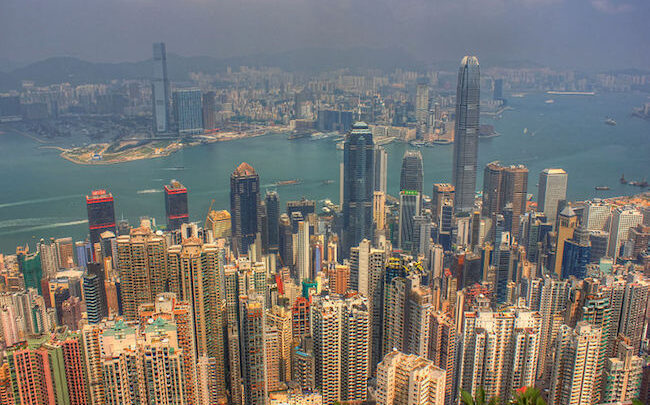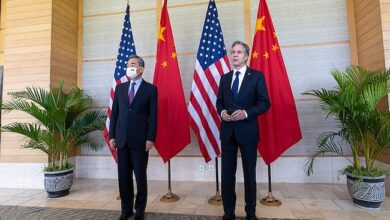
By Sankalp Singh
Sustainable cities have become an engine of growth in 21st century. Several emerging economies have become a pioneer in taking the initiative in becoming sustainable and ushering greening of the economy. Most of the growing cities are located in emerging economies. Presently, about 4 billion people live in cities globally. This is more than 50% of the global population. Talking about specific region of Asia and Pacific, city growth in terms of population comes close to 1.2 billion people, equalling nearly to India’s population. There have been reports from international organisations like the World Bank which has revealed that world has been more urban than rural since 2000[1]. It should come as no surprise to us that by 2050, 70% of people will live in urban areas alone. Naturally, cities are destined to contribute a larger chunk to global wealth. This is an established reality to know that cities are also a major stakeholder to contribute to Greenhouse Gases (GHGs) (Dobbs et al 2011)[2].
Earlier, the debate used to revolve around rural-urban divide and how rural folks utilize every opportunity in taking up some positions in their life in urban areas to earn some livelihoods. With further advancement in technology, industry and urban infrastructure, cities are induced to contribute to global wealth (World Bank 2019)[3]. However, with the current climate change paradigm, we have to take a step forward and see whether urban revolution is sustainable to address the compelling needs of the growing populations throughout the developing world. Industrial development is a necessary potion to urban revolution. Can we enable an environment where industries look for a different model to develop our cities? Goal 9 of Sustainable Development Goals consist of ‘Industry, Infrastructure and Innovation’, while Goal 11 of SDGs are ‘Sustainable cities and communities’[4]. According to UN SDGs, the issue of developing sustainably is not limited to sustainable development in a vacuum, it has to have other important pillars like inclusive development and environmental sustainability. This is an important aspect of connecting other sustainable development goals. But the main agenda of taking the issue of Sustainable cities is whether an improvement in city life causes an optimistic effect on energy, transportation, and industrialism. Components of ‘Urban Revolution’ are transport, energy, information and communication and these are categorised under ‘Basic threads’ of sustainable development.
In developing economies, city administrators are facing severe problem in finding solutions to the Urban Revolution. Some of the problems for setting the Sustainable cities under full throttle is mentioned below:
Transportation– Rise in urban sprawl has led to the problem in managing population commute. India’s financial capital Mumbai is an example that spearheads this area. Even a slight rainfall shower brings the city to a halt and makes the city unwelcoming to people in different sectors of jobs. While there are several different references to this problem, there are also best case practices around the emerging economies that have addressed this problem. Malaysia’s urban transportation strategy is related to its Geographical endowments. An example in this case is Malacca’s Electric bus public transport strategy (John 2015)[5]. Another example comes from a Latin American country Curitiba in Brazil. This city utilized the investment opportunity of Private Sector along with Government to incorporate a strategy to chart out the ‘Dedicated Bus Ways’ (Reed 2015)[6]. One street provides a dedicated direction for countryside, while the other street provides connections to main centres of the city. In this manner, Curitiba has linked countryside folks to city’s mainstreams. All these references show how mixed practices has led to talk about sustainable problems in urban revolution.
Water– There is a mismatch in interlinking water supply to people’s demand. Geographically, Southern nations have been placed at a disadvantage by facing higher temperatures than the northern developed counterparts (Looking at the world map, Countries beyond the tropical belts face polar climates, and they are constituted under the comfortable climatic category, Europe is the example for this. Tourism is their strong contributor to growth because of their climate). Due to this problem, it has led to severe water stresses. Chennai, a city in South India is the recent example for this. Water supply has been hampered owing to continuous drought like situations (Sujith et al. 2019)[7]. Its people have been struggling. Turkana’s riverbed has dried and people have little to no access in fetching water for even their domestic chores. Sana’a, a city in West Asia is facing severe problem with its people’s demand of water. The city has dug 200 cm below sea level in search of potable water (World Bank 2010)[8]. There is no surprise to the fact that Fossil Aquifers have been altered. Is the water supply problem related to land use patterns owing to urban stresses of rapid population upsurge?
Urban Financing model for development– Sustainable cities will not be a reality until it is financed in an intelligible manner. There are various models like Build Operate Transfer, Municipal Bonds, and PPPs to talk about. But are these models friendly to investors? An investor might not operate in the direction of Sustainable Cities because of its gestation period. Conventional city development model take a shorter time to provide ROIs to investors as compared to sustainable city model like Green Buildings, BRTS etc.
Food Waste– SDG goal 12.3 specifically calls for a global approach to cut per capita food waste to its half by 2030. It is a direct approach to not only improve livelihoods, but also address the problem of Greenhouse Gases. In other words, two ambitions can be achieved by a single stroke. A study by FAO has revealed that $750 Billion worth of food is wasted each year globally. This figure surpasses several African Country’s GDP. Wastage of food contributes immensely to Garbage. Food waste attracts animal vectors like rats and malarial parasites that hinder a sustainable model approach to urban revolution. An excellent example comes from a Nordic country Sweden that had passed a Food Wastage law. It integrated food wastage to providing solutions to bus transportation. It even started importing food waste from other countries to convert it to Biogas. These initiatives have paralleled sustainable development solutions to urban issues hampering day to day lives. Can we take food wastage as an opportunity to tackle global environmental problems?
Insurance– An interesting component in the Sustainable city approach is seeing how insurance sector can contribute to the model. Issues pertaining to air pollution, and clean energy are to be tackled in a resilient manner. Agencies like UNEP and ICLEI have worked out 10 goals to initiate and work in this area[9]. Some of the goals like sustainable roadmap for cities, protection of natural and cultural sites are ambitious objectives if taken in a robust way. But these objectives are hindered with ongoing climate crises specially in developing economies. Recent disasters like Japan Floods killed 200 people and Indonesian earthquake has created a havoc in Urban Infrastructure. Can Insurance sector address these problems in a resilient manner? Another example where urban understanding in tackling disaster has failed is Kerala Floods. Its dams reached its saturation point even before disaster management groups could reach a solution. Will Insurance sector take a precautionary approach to take this issue?
Conclusion
Sustainable Cities is not a new issue to tackle urban revolution problems like Pollution and Displacement of people. Despite the strong rhetoric, we have created our own myopia of linking Sustainable cities to urban revolution, which it is not. Sustainable cities mean people have access to country side as well as city side in the same manner, without jeopardizing on Development as well as Nature conservation. How do we balance the see-saw of Sustainable Cities and Eco-Friendly Development requires multidisciplinary touch to the issue.
References:
[1] Somika, L., et al. (2019). Rethinking Density to build cities of the Future. World Bank Blogs. Available at https://blogs.worldbank.org/sustainablecities/rethinking-density-build-cities-future
[2] Richard, D. et al. (2011). Urban World: Mapping the economic power of cities. Available at https://www.mckinsey.com/featured-insights/urbanization/urban-world-mapping-the-economic-power-of-cities
[3] World Bank, 2019. Urban Development: Understanding Poverty. World Bank Topics. Available at https://www.worldbank.org/en/topic/urbandevelopment/overview
[4] United Nations Sustainable Development Goals (UNSDG). Understanding SGDs. Available at https://www.un.org/sustainabledevelopment/sustainable-development-goals/
[5] Jason, J. (2015). Malacca to own Malaysia’s First electric Bus. Available at https://www.nst.com.my/news/2015/09/malacca-own-malaysia%E2%80%99s-first-electric-bus
[6] Drew, R. (2015). How Curitiba’s BRT Stations sparked a transport revolution. The Guardian. Available at https://www.theguardian.com/cities/2015/may/26/curitiba-brazil-brt-transport-revolution-history-cities-50-buildings
[7] Sujith, S. et al. (2019). Chennai Water Crisis: A Wake-up call for Indian Cities. Available at https://www.downtoearth.org.in/blog/water/chennai-water-crisis-a-wake-up-call-for-indian-cities-66024
[8] World Bank. (2010). Yemen- Revolutionizing groundwater resource utilization in Sana’a Basin. Available at http://documents.worldbank.org/curated/en/527421468170991690/Yemen-Rationalizing-groundwater-resource-utilization-in-the-Sanaa-Basin
[9] UNEP Finance Initiative (2018). PSI/ ICLEI Insurance Industry Development Goals for Cities. Available at https://www.unepfi.org/news/industries/insurance/psi-iclei-insurance-industry-development-goals-for-cities/






